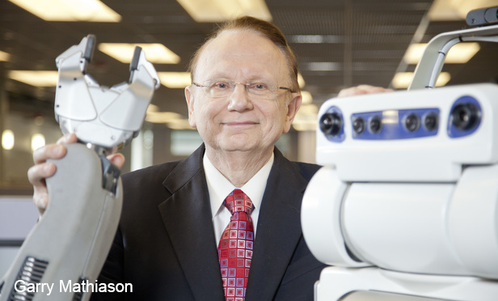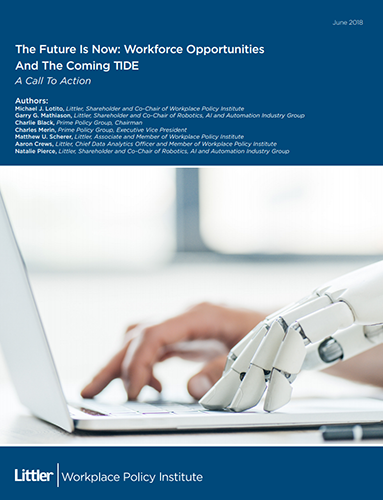Are you ready? Reskilling the workforce
With the fast-paced arrival of innovative and transformative technologies, will workers whose jobs are most likely to be disrupted have the skills and training required for the new jobs being created?
Recognizing, preparing for, and confronting this Technology-induced Displacement of Employees (TIDE) will be the primary challenge that employers and the entire workforce will face in the coming years as automation advances.
New kinds of risks
The rise of artificial intelligence (AI) and robotics will generate unprecedented opportunities and challenges for employers and workers.
The accelerating pace of automation will likely lead to productivity increases on a scale not seen since the Industrial Revolution, while displacing tens of millions of American workers from their current occupations.
The TIDE will disrupt the labor market and bring unprecedented challenges to industries, workers, and governments alike.
By far the greatest workforce challenge will be matching human skills and capabilities with the continuously changing needs of technologically transformed workplaces and, in many cases, the redefinition of work itself.
This Report “The Future Is Now: Workforce Opportunities and the Coming TIDE: A Call to Action”
provides a practical roadmap on how employers, industries, communities, educators, and government
can work together to prepare the workforce for the coming technology-induced shockwaves
while taking full advantage of the opportunities that will be created.
For America’s employers, the decision to automate must be the starting point, not the finish line.
It is no exaggeration to state that the future of the American labor market, economy, and society depends on ensuring that the workers displaced by automation have the skills necessary to remain part of the workforce, or have access to education or training programs that will provide them with such skills.
Authors:
Michael J. Lotito, Littler, Shareholder and Co-Chair of Workplace Policy Institute
Garry G. Mathiason, Littler, Shareholder and Co-Chair of Robotics, AI and Automation Industry Group
Charlie Black, Prime Policy Group, Chairman
Charles Merin, Prime Policy Group, Executive Vice President
Matthew U. Scherer, Littler, Associate and Member of Workplace Policy Institute
Aaron Crews, Littler, Chief Data Analytics Officer and Member of Workplace Policy Institute
Natalie Pierce, Littler, Shareholder and Co-Chair of Robotics, AI and Automation Industry Group





